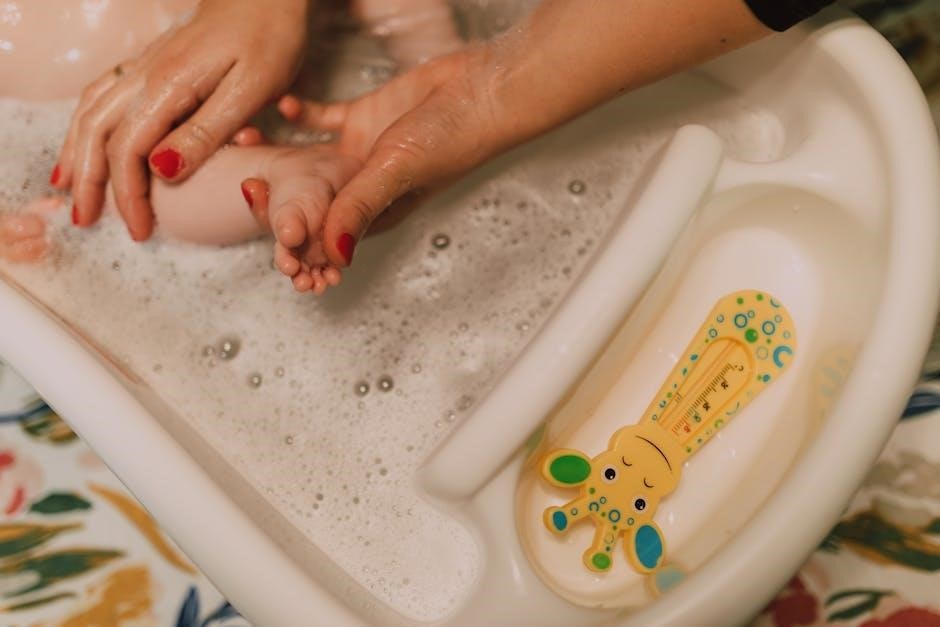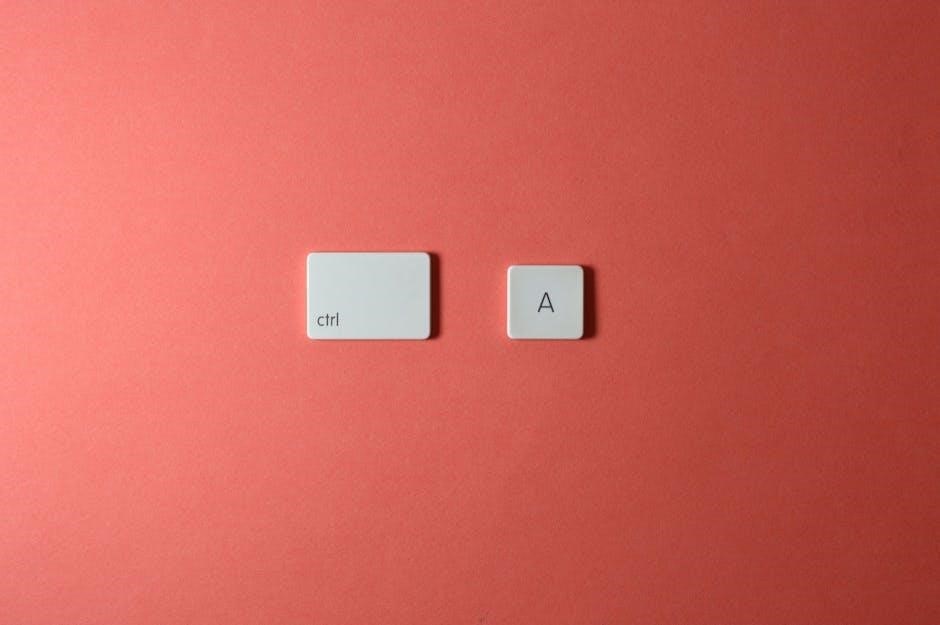
pediatric sleep questionnaire pdf
Overview of the Pediatric Sleep Questionnaire (PSQ)
The Pediatric Sleep Questionnaire (PSQ) is a tool designed to evaluate sleep patterns and identify potential sleep-related problems in children. It encompasses aspects like snoring, breathing difficulties, and daytime sleepiness. The PSQ helps assess sleep quality and behavior.

Purpose of the PSQ
The PSQ aims to screen children for sleep disorders, including sleep-related breathing disorders (SRBD). It assesses snoring frequency, sleepiness levels, and behavioral issues potentially linked to disrupted sleep patterns in pediatric patients.
Screening for Sleep-Related Breathing Disorders (SRBD)
The Pediatric Sleep Questionnaire (PSQ) serves as a valuable screening tool for Sleep-Related Breathing Disorders (SRBD) in children. SRBD encompasses conditions like obstructive sleep apnea (OSA), characterized by pauses in breathing during sleep. Early identification of SRBD is crucial as it can significantly impact a child’s health, behavior, and cognitive development. The PSQ assists in pinpointing children at risk, prompting further evaluation. By assessing specific symptoms, the PSQ aids healthcare professionals in determining the necessity for comprehensive sleep studies, like polysomnography, to confirm a diagnosis and initiate appropriate intervention strategies, such as tonsillectomy or positive airway pressure therapy. Addressing SRBD promptly can improve outcomes.
Assessment of Snoring, Sleepiness, and Behavioral Problems
Beyond screening for SRBD, the Pediatric Sleep Questionnaire (PSQ) facilitates a comprehensive assessment of snoring, sleepiness, and associated behavioral problems in children. The questionnaire delves into the frequency and intensity of snoring, providing insights into potential airway obstruction. Furthermore, it evaluates daytime sleepiness, a common consequence of disrupted sleep, which can manifest as fatigue, difficulty concentrating, and impaired academic performance. The PSQ also explores behavioral issues often linked to poor sleep quality, including hyperactivity, irritability, and emotional dysregulation. By examining these interconnected factors, the PSQ offers a holistic view of a child’s sleep health, enabling targeted interventions to improve sleep quality, address behavioral concerns, and enhance overall well-being and daily functioning.
Target Age Group
The Pediatric Sleep Questionnaire (PSQ) is designed for use with children and adolescents. It helps assess sleep patterns and identify potential sleep-related issues in this specific demographic group.
Children and Adolescents
The Pediatric Sleep Questionnaire (PSQ) serves as a valuable tool for assessing sleep patterns in children and adolescents, a population where sleep disorders can significantly impact development and overall well-being. It aids in identifying potential sleep-related breathing disorders (SRBD), including obstructive sleep apnea, snoring, and other breathing difficulties that may disrupt sleep.
Furthermore, the PSQ helps evaluate daytime sleepiness and associated behavioral problems that can stem from poor sleep quality. By addressing these issues, the PSQ can contribute to early intervention and management strategies, improving the health and quality of life for children and adolescents experiencing sleep disturbances.

Key Components and Scales of the PSQ
The PSQ includes scales for Obstructive Sleep-Related Breathing Disorders (SRBD) and Restless Legs/Periodic Leg Movements (RLS/PLMS). These scales help evaluate specific sleep issues impacting children, offering a comprehensive assessment.
Obstructive Sleep-Related Breathing Disorders (SRBD) Scale
The Obstructive Sleep-Related Breathing Disorders (SRBD) Scale is a key component of the Pediatric Sleep Questionnaire (PSQ). It is designed to identify potential issues related to obstructed breathing during sleep in children. This scale assesses the frequency and intensity of snoring, pauses in breathing, and other symptoms indicative of SRBD. The SRBD scale also examines sleepiness and behavioral problems. Its validated components contribute to the PSQ’s effectiveness in screening for sleep-disordered breathing. The scale aids in determining the likelihood of conditions like obstructive sleep apnea, prompting further evaluation when necessary. Ultimately, it is a valuable tool for pediatric sleep assessments.
Subscales for Obstructed Breathing, Sleepiness, and Behavior
Within the Obstructive Sleep-Related Breathing Disorders (SRBD) Scale of the Pediatric Sleep Questionnaire (PSQ), there are specific subscales that further refine the assessment. These subscales focus on obstructed breathing, sleepiness, and behavior. The obstructed breathing subscale evaluates the severity and frequency of snoring, breathing pauses, and other respiratory symptoms during sleep. The sleepiness subscale assesses daytime sleepiness. The behavior subscale examines behavioral disturbances often associated with sleep-disordered breathing in children. These subscales offer a more detailed understanding of the specific challenges a child may be facing. They aid in identifying the primary areas of concern and tailoring interventions appropriately. The sleepiness subscale is validated.
Restless Legs/Periodic Leg Movements (RLS/PLMS) Scale
The Pediatric Sleep Questionnaire (PSQ) includes a Restless Legs Syndrome/Periodic Limb Movement Scale (RLS/PLMS) to identify symptoms indicative of these conditions. This scale focuses on assessing the presence of discomfort in the legs, an urge to move them, and the occurrence of repetitive leg movements during sleep. These symptoms can significantly disrupt sleep quality and lead to daytime fatigue. The RLS/PLMS scale helps clinicians determine whether further evaluation for these specific sleep disorders is necessary. Identifying RLS/PLMS is crucial, as these conditions can impact a child’s sleep, behavior, and overall quality of life. Early diagnosis and management can improve sleep.

Administration and Scoring
The Pediatric Sleep Questionnaire (PSQ) involves straightforward administration, typically completed by a parent or guardian. Scoring involves summing responses, with specific cut-offs indicating potential sleep problems. Interpretation guides referral considerations.
Instructions for Completion
To ensure accurate assessment using the Pediatric Sleep Questionnaire (PSQ), parents or guardians should carefully read each question. Answer based on the child’s sleep habits during the past month for best results. Circle ‘Yes’, ‘No’, or ‘Don’t Know’ to indicate the frequency or presence of each symptom. Ensure all questions are answered thoughtfully, reflecting typical nighttime behaviors.
Consider the child’s usual sleep environment and routines when responding. Provide honest and unbiased answers to capture a realistic picture of the child’s sleep patterns. This comprehensive approach ensures the questionnaire’s effectiveness in identifying potential sleep-related issues. Accurate completion is essential for proper scoring and interpretation, facilitating appropriate interventions.
Scoring Interpretation and Cut-off Points
The Pediatric Sleep Questionnaire (PSQ) uses a scoring system to quantify sleep-related problems. Each “yes” response typically contributes to the overall score. The total score is then compared against established cut-off points to determine the likelihood of sleep disorders. Specific cut-off values exist for the Obstructive Sleep-Related Breathing Disorders (SRBD) scale and its subscales, indicating varying levels of risk.
Exceeding the cut-off point suggests a higher probability of SRBD, snoring, sleepiness, or behavioral problems. These cut-off points are validated through research, demonstrating their ability to discriminate between children with and without sleep disorders. Interpretation considers both the total score and individual subscale scores for a comprehensive assessment.
Referral Considerations Based on Scores
Elevated scores on the Pediatric Sleep Questionnaire (PSQ), particularly exceeding established cut-off points, prompt consideration for referral to a sleep specialist. A score indicating a high risk for Obstructive Sleep-Related Breathing Disorders (SRBD) warrants further evaluation, potentially including polysomnography. Specific symptoms, such as frequent snoring, observed apneas, or excessive daytime sleepiness, coupled with elevated scores, strengthen the case for referral.
Behavioral problems linked to sleep disturbances, as indicated by PSQ subscales, also necessitate professional consultation. Referral is crucial for accurate diagnosis and intervention, which may include lifestyle modifications, medical treatments, or surgical options. The PSQ serves as an initial screening tool to identify children who would benefit from specialized sleep evaluation.
Validity and Reliability
The Pediatric Sleep Questionnaire (PSQ) has undergone validation studies demonstrating its ability to accurately identify sleep disorders in children. Its reliability ensures consistent results, making it a dependable screening tool.
Studies Validating the PSQ
Several studies have assessed the validity and reliability of the Pediatric Sleep Questionnaire (PSQ) in diverse populations. Research by Chervin et al. (2000) established the PSQ’s effectiveness in identifying sleep-disordered breathing, snoring, sleepiness, and behavioral problems. Additional studies have explored its congruence with polysomnography, the gold standard for sleep apnea diagnosis. These investigations confirm the PSQ’s utility as a screening tool for sleep disorders. Studies also highlight the PSQ-SRBD Scale’s subscales, including those for obstructed breathing, sleepiness, and behavior. The sleepiness subscale is validated against the Multiple Sleep Latency Test (MSLT). Furthermore, research has examined the PSQ’s application in specific populations, such as children with asthma or juvenile idiopathic arthritis, solidifying its adaptability.

Availability of PSQ PDF Versions
The Pediatric Sleep Questionnaire (PSQ) is readily accessible in PDF format for convenient use by clinicians, researchers, and parents. Many healthcare institutions and research organizations offer downloadable PDF versions of the PSQ on their websites. Stanford Health Care and other medical centers provide access to the PSQ-SRBD scale and related documents in PDF form. These online resources allow users to easily print and administer the questionnaire. The PSQ PDF versions often include instructions for completion and scoring. Availability of the PSQ in PDF format facilitates widespread adoption and standardized assessment of pediatric sleep disorders. Remember to respect copyright and usage guidelines when accessing and utilizing these files.

